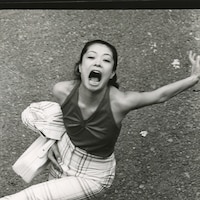The poet laureate on why your voice is the most powerful tool in the world
Writer and activist Maya Angelou’s voice was so powerful, it still rings loudly across the globe. As we continue her fight for equality, her endless poems and autobiographies serve as pillars for how to progress the world’s social and political reality.
Having spread her talents across dancing, singing, literature, and poetry, it’s no wonder her impact is still felt so strongly four years on from her death. In the 1950s, she was a San Francisco famed Calypso dancer and singer; in the 1960s, she rose to become a writer and core part of the Civil Rights Movement alongside Malcolm X and Martin Luther King Jr, and in the 1970s, she was famed for writing poetry that addressed issues of racial and gender inequality. On January 20, 1993, she became the first woman and the first black woman to recite a poem at a presidential inauguration, reading her “On The Pulse Of Morning” poem at Bill Clinton’s inauguration. In 2010, then-President Barack Obama awarded her the Medal of Freedom to which he stated: “(Maya Angelou) touched me, she touched all of you, she touched people all across the globe, including a young white woman from Kansas who named her daughter after Maya and raised her son to be the first black president of the United States.”
On what would have been the luminary’s 90th birthday, here is Maya Angelou in her own words.
“I thought, my voice killed him; I killed that man, because I told his name.”
Angelou didn’t speak a single word between the ages of eight and 13. When she was eight years old, she was raped by her mother’s boyfriend, Freeman. Angelou told her brother what happened, which resulted in Freeman’s arrest and sentencing to one day in jail. Four days after Freeman was released, he was murdered by what was believed to be Angelou’s uncles. Shocked by Freeman’s death, Angelou became mute for nearly five years because she believed it was her voice that caused Freeman’s death. “I thought, my voice killed him; I killed that man, because I told his name. And then I thought I would never speak again, because my voice would kill anyone …” According to Angelou’s biographer Marcia Ann Gillespie, it was her mutism that allowed Angelou to realise her calling as a writer. This period of silence allowed Angelou to fall in love with the works of Shakespeare, Edgar Allen Poe, Anne Spencer, Frances Harper, and Jessie Fauset. Ultimately, she was persuaded to speak again by a friend of her grandmother, who realised Angelou’s passion for poetry and convinced her that in order for poetry to be fully loved, it had to be spoken aloud. She told Angelou: “You will never love poetry until you actually feel it come across your tongue, through your teeth, over your lips.”

“Music was my refuge. I could crawl into the space between the notes and curl my back to loneliness.”
Unbeknown to most, in the early 50s – a decade before she would publish her first piece of writing – Angelou was an aspiring singer and dancer who gained a following by performing in local nightclubs in San Francisco.
After marrying her first husband Tosh Angelos in 1951, she began modern dance classes where she formed a dance team with choreographer Alvin Ailey. They called themselves "Al and Rita", and performed modern dance at fraternal black organisations throughout San Francisco but never became successful. When Angelou’s marriage ended in 1954, she danced professionally in clubs around San Francisco, including the nightclub the Purple Onion, where she sang and danced to calypso music. It was this moment that pushed her towards her short career as a calypso singer.
It was also at this moment when Angelou got her name. Up to this point in her life, she went by the name of "Marguerite Johnson", or "Rita", but at the strong suggestion of her managers at the Purple Onion, she changed her professional name to "Maya Angelou" (her nickname and former married surname). It was said to be a "distinctive name" that set her apart and captured the feel of her calypso dance performances. At at the height of the calypso movement in 1957, Angelou recorded her first and only album, Miss Calypso. In the five-song album, Angelou fuses jazz and Afro-Carribean rhythms to cover of Nat King Cole’s “Calypso Blues” and Louis Jordan’s “Run Joe”. Angelou's short-lived music career also involved songwriting credits for two B.B. King songs.
“There is no greater agony than bearing an untold story inside you.”
When Angelou was 49, she told the story of her childhood in her most well-noted autobiography, I Know Why The Caged Bird Sings (1978). Angelou’s first written profession was painfully honest and it changed the art of autobiography forever – illuminating the artist's lifelong commitment to rendering her own vulnerability in a bid to change the world. I Know Why The Caged Bird Sings tells Angelou’s coming of age story fused with elements of fiction, popularising autobiographical fiction while also reinstating African-American, female context in a white-dominated medium. According to author and writer Hilton Als, up until Angelou came along, black female writers were so marginalised that they weren’t able to write themselves in as central characters in the literature they wrote. Angelou unapologetically revolutionised this by becoming one of the first black autobiographers that could, as Als put it, “write about blackness from the inside, without apology or defence.” Other notable autobiographies by Angelou include Wouldn't Take Nothing for My Journey Now (1993) and Even the Stars Look Lonesome (1997).

”I am the dream and the hope of the slave.
I rise
I rise
I rise.”
And Still I Rise was Maya Angelou’s third volume of poetry published by Random House in 1978. It comprises of 32 short poems that all focus on hope and determination to rise above humanity’s hardships. “Still I Rise” (1976) is Angelou’s favourite poem from the series and it’s one of the volume’s most well-known poems. It shares the same title as a play Angelou wrote in 1976 and it refers to the unshakeable spirit of black people that is used to rise above racism and adversity. The impact of “Still I Rise” was felt so strongly, that Nelson Mandela read this poem at is 1994 inauguration, after having spent 27 years in jail.
Maya Angelou was a powerful civil rights activist, devoting a lot of her art to progressing the rights of black people in 60s America. She began working with Martin Luther King Jr in 1960 to promote his civil rights action-group, the Southern Christian Leadership Conference, for which she organised the Cabaret for Freedom benefit to raise money for the organisation. After befriending Malcolm X, Angelou helped him to develop the Organization of Afro-American Unity. Unfortunately, before the organisation could begin, X was assassinated. In 1968, while helping King organise a march, he too was assassinated. The death of both close friends and civil rights leaders then inspired Angelou to write, produce and narrate a ten-part documentary entitled “Blacks, Blues, Black!” (1968)
“Still I Rise” was recited by Munroe Bergdorf for Dazed in 2017.
“I'm a woman
Phenomenally.
Phenomenal woman,
That's me.”
Angelou’s 1970s writings were immersed in a context of new feminism. When she published Caged Bird in 1970, a new context of black feminism was rising. In the late 60s, a number of black women refused to accept inferior positions in two leading civil rights groups, the Student Nonviolent Coordinating Committee and the Congress of Racial Equality. This caused a split between genders and so the New Women’s Movement rose: a feminist movement that was indebted to with the Civil Rights Movement.
Angelou’s Caged Bird was published at a time when black sister leagues were being formed in America. On top of this, black women were forming groups to discuss their experiences of oppression under the patriarchy. A year before the Caged Bird was published, Black poet Sonia Sanchez introduced the “The Black Woman”, a course at the University of Pittsburgh and the first college course to focus on the experiences of black women in America.
When Angelou went on to write the poem “Phenomenal Woman” (1978), published in And Still I Rise, feminist themes were heavily threaded through her work. The lyrical poem is a message of female empowerment about taking pride in individual identity. “I love to see a young girl go out and grab the world by the lapels,” Angelou once stated. “Life's a bitch. You've got to go out and kick ass.”

“Life doesn’t frighten me at all”
In a dream collaboration, Maya Angelou and painter Jean-Michel Basquiat made a children’s book titled Life Doesn’t Frighten Me in 1983 that was aimed at teaching us all how to tackle life and the world. Fusing Angelou’s signature style poetry with Basquiat’s cartoon-like drawings, the book summons monsters before yelling at them “LIFE DOESN’T FRIGHTEN ME AT ALL”. The book was made to create a “brave, defiant” tale that “celebrates the courage within each of us, young and old”.






